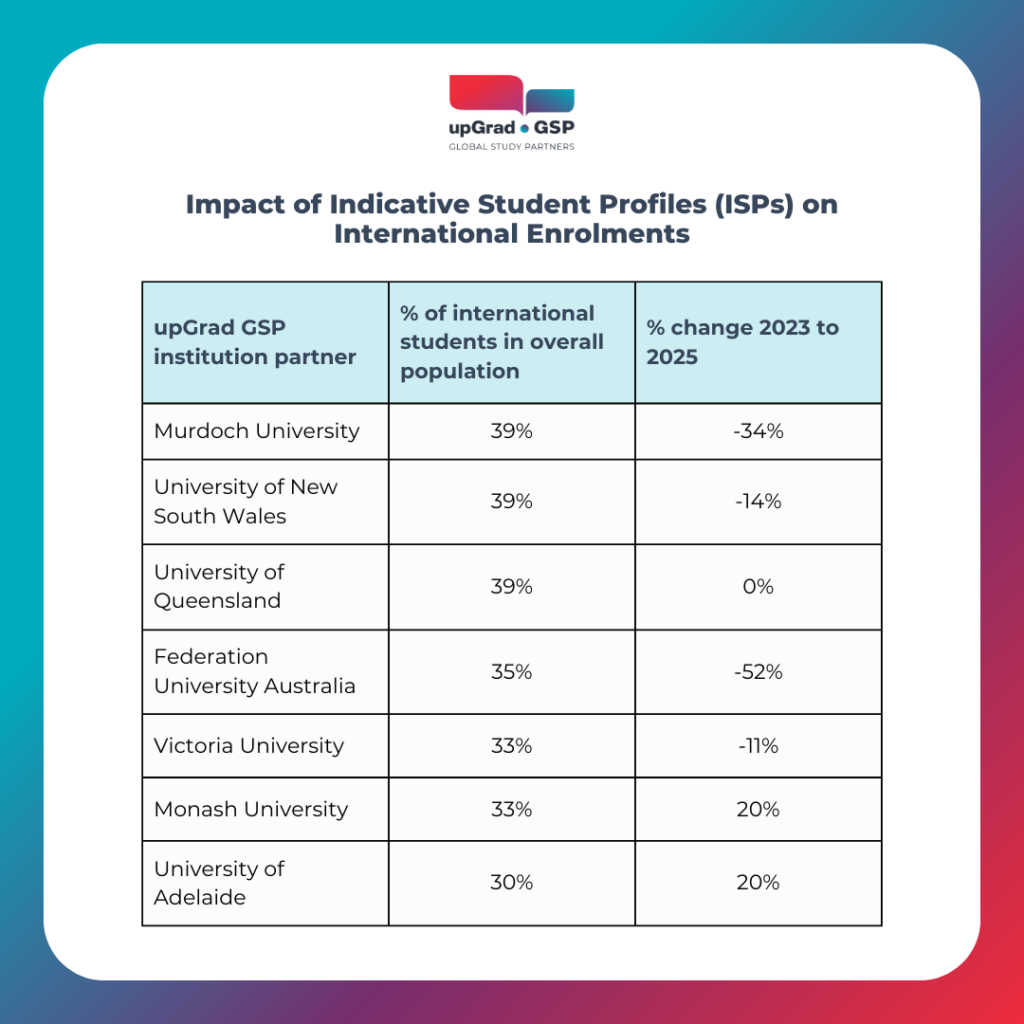On the third day of the ESOS Bill hearing on 6 September, the Australian government released its proposed enrolment caps for public universities. This gave a peek into indicative allocations of the 270,000 cap on new student commencements, called the National Planning Level (NPL), announced on 27 August.
Caps for public universities
The Australia Department of Education outlined the caps, referred to as indicative student profiles (ISPs), during the hearing. Data revealed that public universities could collectively enrol a little over 145,000 international students in 2025.
The cap is similar to the 2023 levels. However, it’s distributed unevenly across institutions, prioritising those that have been disadvantaged by the pandemic and uneven student patterns. This means that universities with higher concentrations of foreigners or have grown exceptionally in recent years may receive lower allocations. Conversely, institutions with lower international student populations may have more space.
Here’s a look into the indicative 2025 ISPs of upGrad GSP’s partner public universities in Australia:
- Australian Catholic University: 1,700
- Charles Darwin University: 3,000
- Charles Sturt University: 1,000
- Curtin University: 3,500
- Deakin University: 5,800
- Federation University Australia: 1,100
- Flinders University: 3,000
- Griffith University: 3,700
- James Cook University: 2,200
- La Trobe University: 4,100
- Macquarie University: 4,500
- Murdoch University: 3,500
- Queensland University of Technology: 4,500
- Royal Melbourne Institute of Technology: 6,600
- Southern Cross University: 1,300
- Swinburne University of Technology: 4,500
- University of Adelaide: 3,800
- University of New South Wales: 9,500
- University of Newcastle: 1,600
- University of Notre Dame Australia: 700
- University of Queensland: 7,050
- University of Western Australia: 3,000
- University of Canberra: 1,500
- University of New England: 700
- University of South Australia: 3,050
- University of Southern Queensland: 1,000
- University of Tasmania: 2,200
- University of Technology Sydney: 4,800
- University of the Sunshine Coast: 1,200
- University of Wollongong: 3,700
- Victoria University: 3,600
- Western Sydney University: 3,400.
The Department of Education stipulated that the ISPs aren’t final, with the actual caps to be published “as soon as possible, subject to the passage of legislation.”
Gains and losses
The institutions most affected by the caps are those whose international student demographic comprises over 30% of their overall student population. For instance, 30% of the learning population at Murdoch University, the University of New South Wales and the University of Queensland are made up of foreigners. The caps shall hit these universities with -34%, -14% and 0% differences in enrolment numbers, respectively, in 2025 versus in 2023.
Here’s a look into the universities most affected by the ISPs:

Notably, several institutions shall experience a rise in their international enrolments based on their ISPs. Charles Sturt University is the biggest gainer with a 517% increase versus its 2023 numbers, followed by the University of Notre Dame Australia (140%) and the University of the Sunshine Coast (108%).
Implementation timeline
The ESOS bill faces a tight schedule for review, with the committee requesting an extension to the reporting deadline, now set on 16 September. That said, Australian Home Affairs has asserted that, if the legislation passes, the caps would be ready for implementation by the beginning of 2025.
Stakeholders have raised concerns about the timeline of events, especially as officials have only started rolling out cap allocations in recent weeks.
Sector response
The international education sector has lamented the caps and has especially criticised the government’s formula for calculating the allocations. Witnesses in the Senate said that the caps appeared “somewhat random” as they largely varied across Australia’s public universities.
Amid much criticism of the government formula for calculating the caps, witnesses in the Senate said the caps appeared “somewhat random” and created “perverse outcomes”, with caps varying to a large degree across Australia’s public universities.
Stakeholders are doubling down with the government as they highlight the possible adverse effects of the caps.
During the hearing, Independent Tertiary Education Council Australia (ITECA) deputy chief executive Felix Pirie criticised the Bill for being “poorly drafted” and including “technical flaws.” He commented, “The absence of an assessment of the likely impact across the different areas of the sector it will affect and the as-yet-unknown implementation arrangements all merit significant further interrogation.”
As discussions surrounding the ESOS bill continue nearing its reporting deadline, the sector braces for the changes, eager to maintain Australia’s reputation as a leading study-abroad destination.
Check back on the GSP newsroom for more updates on Australia’s enrolment caps. Our business development experts are ready to help you navigate these changes and continue to provide international students with the best experiences.



